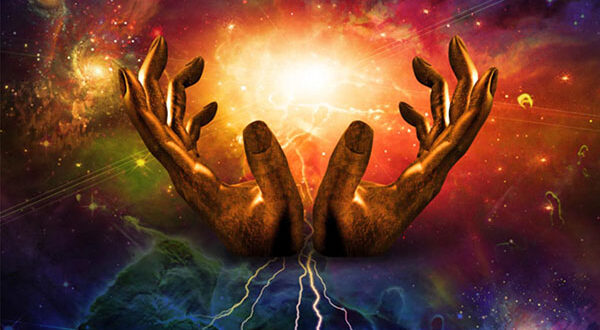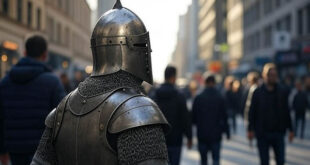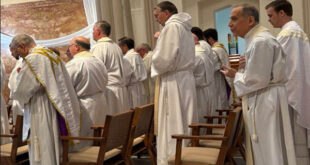The history of science and religion is often portrayed as a constant conflict, but the reality is much more nuanced. In fact, some of the most important scientific breakthroughs in history have been made by deeply religious men and women, many of them Catholics. The cases of Gregor Mendel, the father of modern genetics, and Georges Lemaître, the priest who proposed the Big Bang theory, are outstanding examples of how faith and reason can work in harmony.
In this article, we will explore the lives and contributions of these two giants of science, showing that being Catholic and a scientist is not only compatible but, in many cases, has been a driving force in the pursuit of knowledge and truth.
Gregor Mendel: The Monk Who Discovered the Laws of Heredity
A Man of Faith and Science
Gregor Johann Mendel (1822-1884) was an Augustinian monk who, while living in a monastery in Brno, in what is now the Czech Republic, made one of the most important discoveries in biology. By studying pea plants in the monastery’s garden, Mendel uncovered the laws of genetic inheritance, laying the foundation for the science of genetics as we know it today.
What is interesting is that his dedication to science did not arise despite his religious life, but rather as an extension of his desire to understand the order and beauty of God’s creation. Mendel viewed his scientific experiments as a way to explore divine creation. His scientific curiosity was fueled by his Catholic faith, which gave him a deep sense of order in nature.
Mendel’s Laws
Mendel began his experiments with peas in 1856. Over several years, he crossbred different varieties of peas and observed how certain traits — such as flower color or seed texture — were passed from one generation to the next. Through his observations, Mendel formulated what would later be known as Mendel’s Laws:
- The Law of Segregation: Every organism has two alleles for each trait, and these alleles segregate (separate) during the formation of gametes.
- The Law of Dominance: In a cross between two organisms, one of the alleles may be dominant and mask the other (recessive) allele.
- The Law of Independent Assortment: Traits are inherited independently of one another.
These principles revolutionized the understanding of biology, but during Mendel’s lifetime, his discoveries did not receive the recognition they deserved. It wasn’t until the early 20th century, decades after his death, that other scientists rediscovered his work and elevated it to its rightful place in the history of science.
Faith and Science in Mendel’s Life
Mendel’s example challenges the erroneous notion that faith is incompatible with scientific advancement. His life shows that scientific curiosity and religious faith are not opposing forces but can complement each other. For Mendel, exploring nature was a way to honor the Creator, and his faith in an orderly, intelligible God provided the framework to seek patterns and regularities in nature.
Georges Lemaître: The Priest Who Proposed the Big Bang
A Priest Among the Stars
If modern genetics owes its existence to a monk, modern cosmology owes much to a priest. Georges Lemaître (1894-1966) was a Belgian Catholic priest and astrophysicist who proposed what later became known as the Big Bang Theory. Far from being in conflict with his faith, Lemaître saw his scientific work as a way to better understand the origins of the universe — something deeply compatible with his belief in a Creator God.
Lemaître was not only a devout priest but also a brilliant mathematician and physicist. He studied under some of the leading scientists of his time, such as Arthur Eddington in the United Kingdom, and kept abreast of the latest developments in physics and astronomy, including Albert Einstein’s work on general relativity.
The Origin of the Universe: From the “Primeval Atom Hypothesis” to the Big Bang
In 1927, Lemaître proposed that the universe was expanding, based on Einstein’s theory of general relativity. This idea was not initially accepted by everyone, and Einstein himself was skeptical at first. But Lemaître was undeterred. In 1931, he took his idea further, suggesting that the universe began from an extremely compact state that he called the “primeval atom.” This idea was the precursor to what we now call the Big Bang Theory.
Lemaître saw no contradiction between this theory and his faith in God. In fact, he argued that his theory explained the “how” of the universe, while theology dealt with the “why.” According to him, science and religion answered different, yet equally important, questions. As he once wrote, “there is no conflict between religion and science; their fields are completely distinct.”
The Validation of the Big Bang
Over time, astronomical observations, such as Edwin Hubble’s discovery of the universe’s expansion, and later the detection of cosmic microwave background radiation, provided strong evidence supporting Lemaître’s theory. Today, the Big Bang is the dominant model in cosmology for explaining the origin of the universe.
Lemaître remained a priest throughout his life, serving the Church while advancing his scientific research. Like Mendel, he saw science as a way to gain a deeper understanding of God’s creation, and his life is an example of how faith and reason can coexist and enrich one another.
Science and Faith: A Fruitful Collaboration
The examples of Gregor Mendel and Georges Lemaître show us that Catholic faith and science not only can coexist but can complement each other profoundly. Both scientists, motivated by their faith, made groundbreaking contributions to human knowledge. The Church, far from being an enemy of science, has often been a promoter of knowledge, as these and many other cases of Catholic scientists throughout history demonstrate.
Today, these stories invite us to rethink the relationship between science and religion, especially in an age when technological and ethical challenges are becoming more complex. The Catholic faith not only calls us to believe but also to use our reason and intellect as gifts from God to explore and understand the world around us.
Final Reflection
Mendel and Lemaître are powerful examples of how Catholics have contributed significantly to the advancement of science. For them, faith was not an obstacle but a motivation. As Catholics in the 21st century, we can learn from their examples: we should not fear science but embrace it as a tool that ultimately helps us discover more about the Creator and His creation.
Today, as we face more complex scientific and ethical questions, the combination of faith and reason remains a reliable guide. Like Mendel and Lemaître, we are called to use our talents and knowledge to serve the world and seek the truth, always with the confidence that properly understood science does not draw us away from God but brings us closer to Him.






